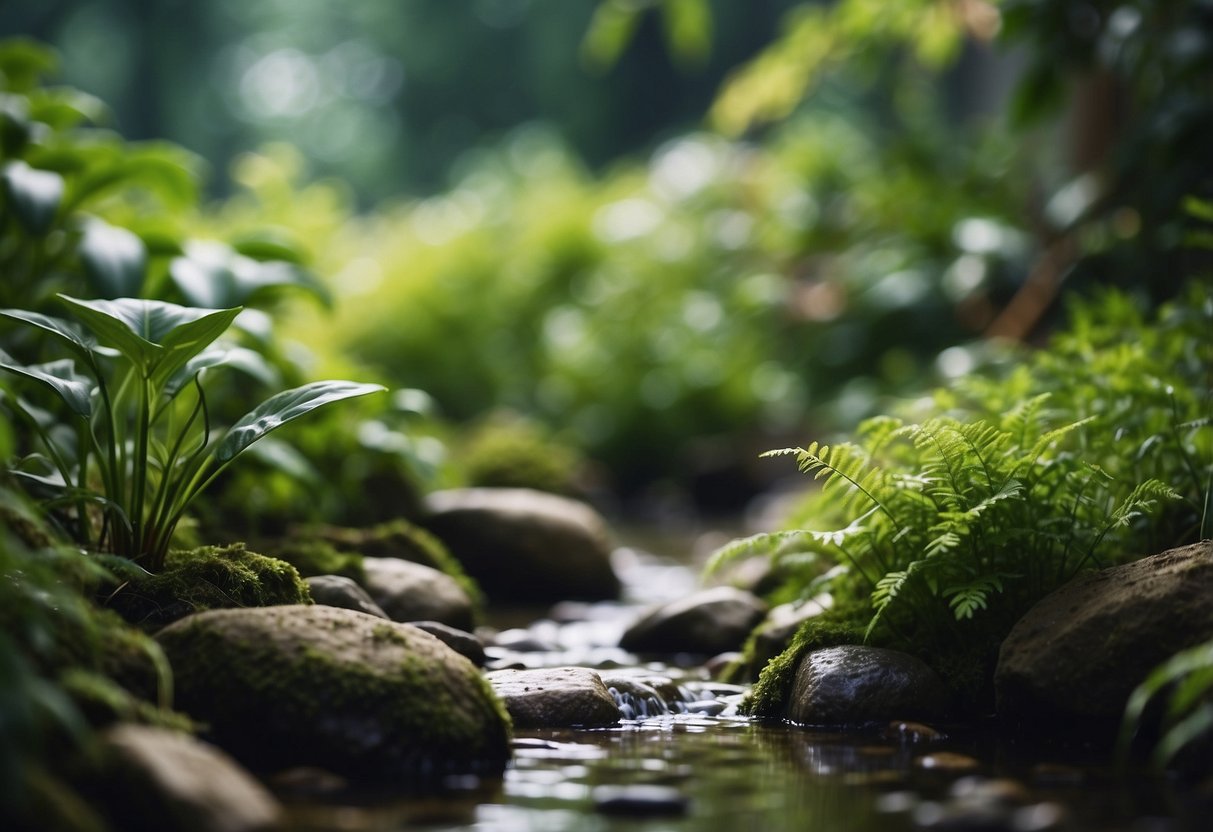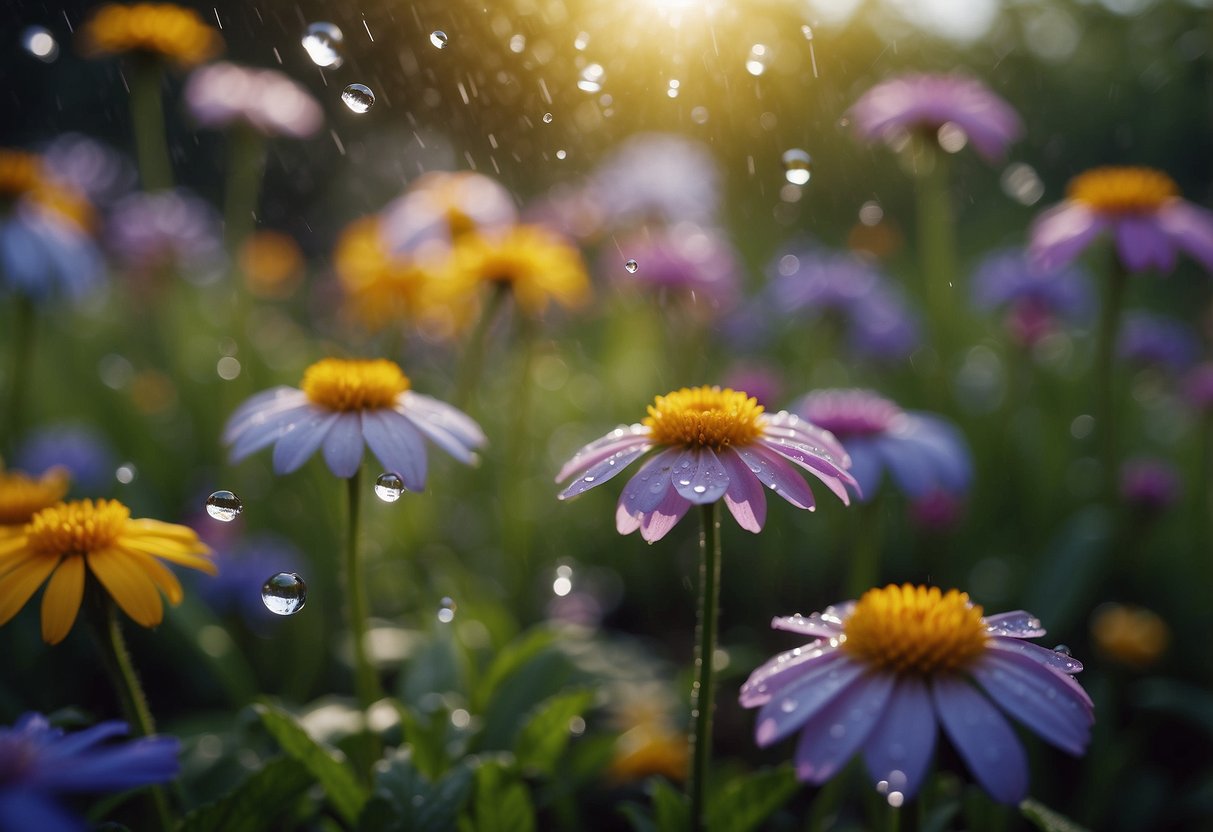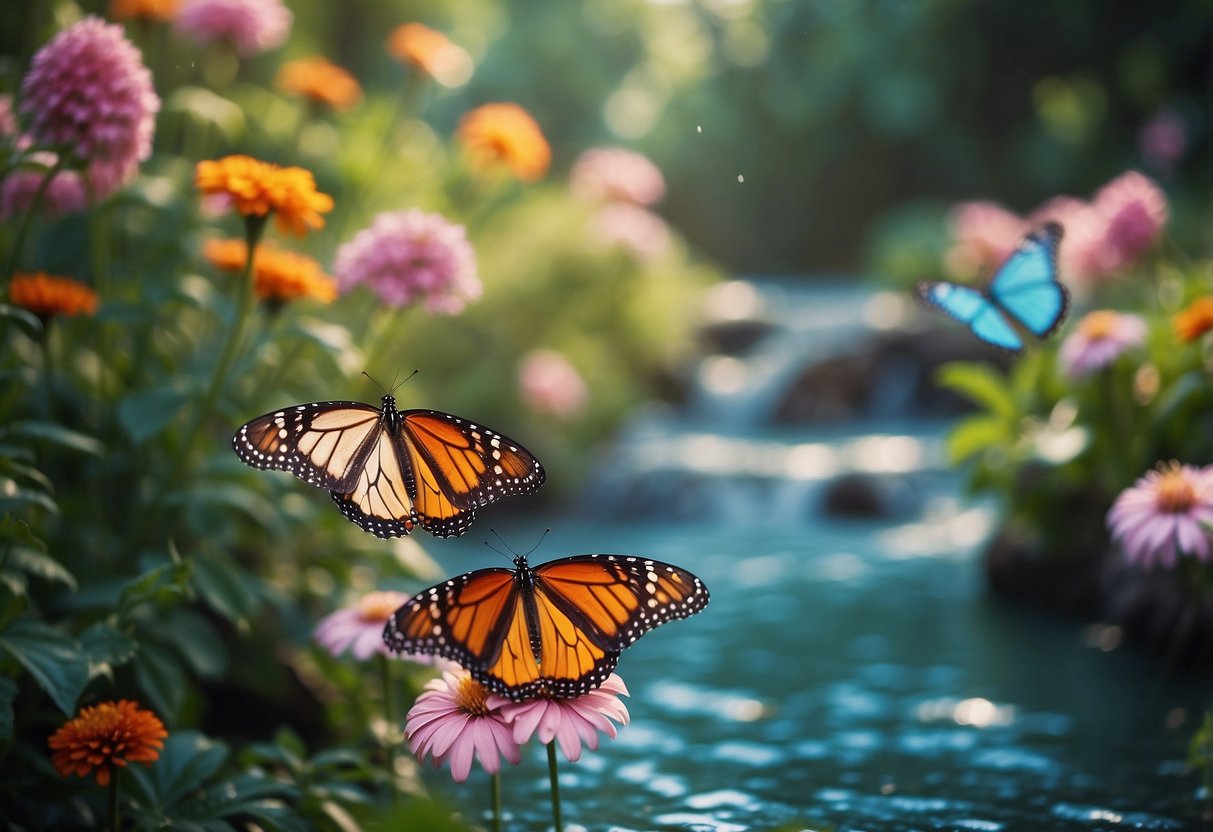Rain Garden Ideas: Creative Tips for a Lush, Eco-Friendly Yard
Creating a rain garden is an excellent way to manage rainwater runoff and add beauty to your yard. As you explore rain garden ideas, you’ll find numerous design options that not only improve water quality but also support local wildlife. By incorporating native plants, you can ensure your garden thrives with minimal maintenance.

Rain gardens offer a practical solution to stormwater problems, helping to prevent erosion and filter pollutants. Whether you’re interested in a small, simple garden or a more elaborate design, there are plenty of creative ideas to suit your space and style.
1) Native Plants Selection

Choosing the right native plants for your rain garden is important. Native plants are adapted to your local climate and soil, making them easy to care for.
Cardinal Flower is a great option. Its bright red blooms attract hummingbirds and butterflies. It thrives in wet, soggy areas.
Another excellent choice is Foxglove Beardtongue. This plant is low-maintenance and can tolerate both wet and dry soil. It grows tall and adds a striking appearance to your garden.
For residents in the southern regions with clay soil, it performs particularly well.
2) Rainwater Harvesting Systems

Rainwater harvesting systems are great for making use of rainwater. One simple way to start is by using a rain barrel. You can even use a plastic barrel and adapt it with a hose to collect rainwater from your roof. For more ideas, check out this guide.
Adding a first flow diverter to your setup can help keep dust and dirt out. It’s especially helpful for larger systems, such as the Homesteader Rain Collector which holds up to 2,500 gallons.
Whether you need water for your garden or just want to save on your water bill, these systems can be really useful.
3) Berm and Swale Designs

Berms and swales are excellent features to add to your rain garden. These elements help manage water flow and prevent erosion.
A berm is a small raised barrier that directs water. You can build it using soil and organic matter.
Swales are shallow ditches that capture and filter water. They work well with berms to control stormwater runoff efficiently. Check out some ideas on berms and swales.
Add rocks or plants on the berms and swales to make them look natural and beautiful.
4) Rain Garden Location Tips

Choose a spot that naturally collects rainwater. A low area in your yard is ideal. Make sure the location gets sun for at least half the day.
Keep the rain garden at least 10 feet away from your house. This helps prevent water damage. Use well-draining soil or improve the soil if needed.
Avoid placing it near large tree roots. Roots can disrupt the garden and make planting difficult.
5) Water-Tolerant Flowers

Marsh marigold blooms with bright, buttercup-like flowers from mid-spring to early summer. It’s a great choice for areas with lots of rain.
Rose mallow, a deciduous shrub, boasts large flowers from mid-summer to early fall. It’s perfect for adding color to your garden.
Elephant ears offer huge, striking leaves that thrive in wet environments, making them a natural focal point.
6) Sloped Rain Garden Ideas

Creating a rain garden on a hill can be a fun project. You need to be careful with the slope to avoid erosion problems. If the slope is too steep, it may be better to terrace the hill into smaller pockets.
Terracing helps manage water flow. Each level can act as a mini rain garden. This setup captures water and allows it to soak into the soil.
Using a series of small ponds is another idea. These ponds can filter rainwater and reduce runoff. They add a visual charm to your garden as well.
7) Butterfly Rain Gardens

Butterfly rain gardens are a wonderful way to attract butterflies while managing rainwater. Plant native flowers like milkweed and purple coneflower.
Create a mix of colors and heights to appeal to different butterfly species. Include rocks or small logs for butterflies to rest on.
To learn more about planting for butterflies, check out these butterfly garden ideas.
8) Urban Rain Garden Solutions

Urban rain gardens can be both beautiful and practical. They help manage stormwater runoff while adding greenery to city landscapes.
Choose plants that thrive in wet conditions, like ornamental grasses and native perennials.
Consider adding a small pond to create a focal point and enhance water absorption. You can find more ideas on this Epic Gardening page.
Implement rain gardens in compact spaces to effectively filter rainwater and prevent pollution. For more designs and benefits, check out Sharon Sable’s ideas.
9) DIY Rain Barrel Setup

Setting up a DIY rain barrel is a simple and eco-friendly way to conserve water. You can use a large garbage can to start.
First, thoroughly rinse the barrel inside and out. Cut a hole near the top for the downspout and one near the bottom for a spigot.
Attach a screen on top to filter debris and you’re ready to collect rainwater for your garden. For detailed steps, check out these ideas and set up instructions.
10) Permeable Pavement Paths

Adding permeable pavement paths to your garden is a smart way to manage rainwater. These paths let water seep through and return to the soil.
You can choose from options like gravel, stone, or specially designed pavers. Each type adds charm while helping to reduce runoff and flooding.
Permeable paving blends well with various garden styles, making it both practical and attractive.
Benefits of Rain Gardens

Rain gardens offer numerous advantages that go beyond their beauty. They improve the environment, save money, and enhance the look of your yard.
Environmental Advantages
Rain gardens help manage stormwater by absorbing rain runoff. This reduces flooding and decreases the strain on local water systems. When you plant a rain garden, you’re also helping to filter pollutants from the water, which keeps rivers and lakes cleaner.
These gardens attract wildlife, such as butterflies and bees, enhancing biodiversity. By using native plants, you create a habitat for local species. Plus, the plants in rain gardens can absorb carbon dioxide, which helps combat climate change.
Cost Savings
Rain gardens can save you money in several ways. Unlike a traditional lawn, a rain garden doesn’t need mowing. This reduces the need for lawn care equipment and fuel. Although rain gardens need maintenance, like trimming and mulching, they generally require less time and money than a lawn.
Rain gardens can also reduce your water bill. They capture and use rainwater, so you won’t need to rely as much on your sprinkler system. Additionally, some areas offer rebates or financial incentives for homeowners who install rain gardens, making them even more cost-effective.
Aesthetic Appeal
Incorporating a rain garden into your yard can greatly enhance its visual appeal. With a variety of plants, you can create beautiful and diverse landscapes. Rain gardens can feature colorful flowers and lush green plants that change with the seasons, adding year-round interest to your yard.
Rain gardens also offer a sense of tranquility. By including elements like smooth rocks and small water features, you can design a peaceful spot to relax and unwind. Moreover, these gardens can be customized to fit any space, making them a versatile choice for any yard.
Designing Your Rain Garden

A rain garden is a beautiful way to capture stormwater and enhance your landscape. Focus on the crucial aspects like location, plant selection, and soil preparation to ensure your rain garden thrives.
Choosing the Right Location
The first step is to choose a suitable spot. Look for areas where water naturally pools during rainstorms. These spots are usually low-lying.
Place your rain garden at least 10 feet away from your home to avoid water seeping into the foundation. Ensure it’s not directly over utility lines.
Observe how water flows across your yard. It should move toward the rain garden, not away from it. This will help manage stormwater effectively. Aim for a sunny or lightly shaded spot, as most rain garden plants thrive in these conditions.
Selecting Appropriate Plants
Choosing the right plants is vital for a productive rain garden. Opt for native plants that are well-suited to your local climate and soil.
Select a mix of grasses, shrubs, and flowering plants. Examples include ornamental fescue grass, creeping thyme, and water-loving plants like irises and ferns. Native plants have deeper root systems, which help filter water and reduce erosion.
Group plants with similar water and sunlight needs together. This ensures that all plants are healthy and growing well. Native plants also support local wildlife, like birds and pollinators, adding beauty and ecological benefits to your garden.
Soil Preparation
Soil plays a key role in the success of your rain garden. Start by testing your soil’s drainage by digging a small hole and filling it with water.
If the water drains within 24 hours, your soil is suitable. If it takes longer, amend the soil with compost and sand to improve drainage.
You might need to remove existing turf and mix in organic matter like compost. This enhances the soil’s ability to absorb and filter water. Finally, create a flat bottom and gently sloping sides to help direct water flow into the garden. Ensure the soil is loose and not compacted to allow plant roots to establish well.







